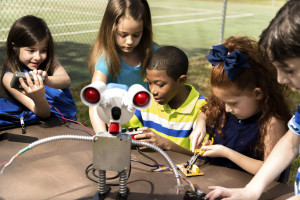
Yet despite the investment and focus, research studies show that many of these efforts fall flat, producing few, if any, gains in student achievement and interest.
Why is this, and can STEM programs get better?
McREL’s Bryan Goodwin and Heather Hein recently dug into this question for a column in ASCD’s Educational Leadership magazine. They found that how students are taught is an important factor for long-term interest, with successful STEM programs focusing on rich, hands-on research experiences and real-world applications. It also appears that out-of-school time programs, which are free from the constraints of our current accountability- and assessment-driven time in school, approach STEM more creatively and offer a way to rekindle student interest.
You can read the full column on the ASCD Educational Leadership site.
Posted by McREL International.
